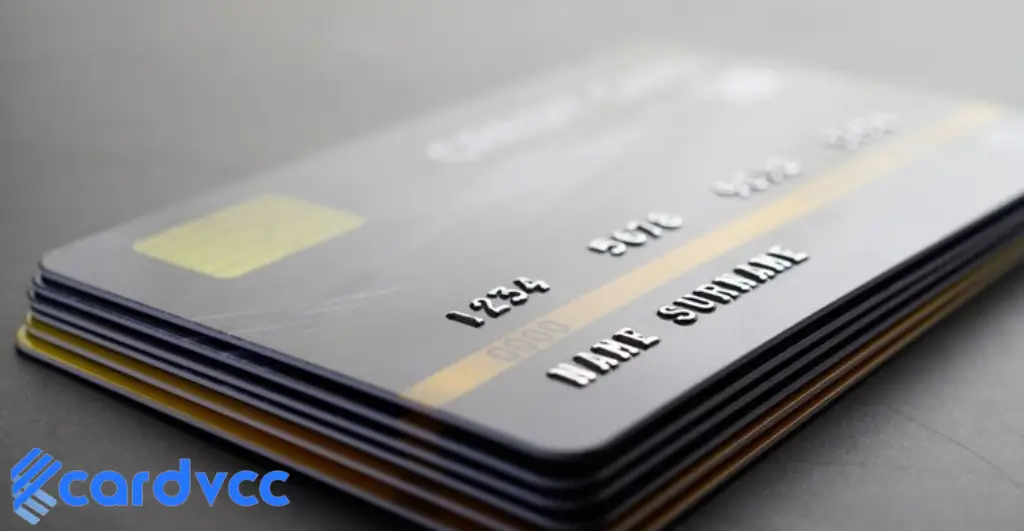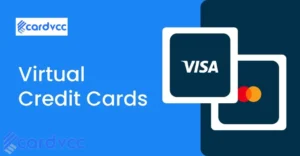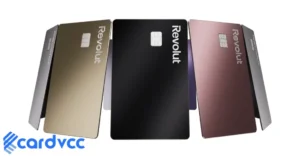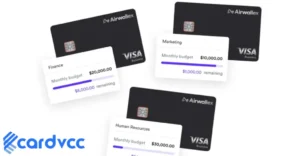To dispute a charge on your debit card, contact your bank immediately and provide details of the unauthorized transaction. Follow the bank’s dispute process to resolve the issue.

Unexpected charges on your debit card can be frustrating and concerning. Identifying and disputing these charges promptly is crucial for protecting your finances. Banks have procedures in place to handle such disputes effectively. Ensure you provide all necessary information, including transaction details and any supporting documents.
This helps the bank investigate and resolve the dispute quickly. Acting swiftly not only prevents further unauthorized transactions but also increases the likelihood of recovering your funds. Understanding the dispute process can save you time and reduce stress, ensuring your financial security.
Introduction To Dispute Charges
Dispute charges on debit cards can be confusing. This blog will explain what they are. Learn common reasons for disputes and how to resolve them.
What Is A Dispute Charge?
A dispute charge occurs when a cardholder questions a transaction. They believe the charge is incorrect or unauthorized.
Disputes can involve fraudulent charges or billing errors. Cardholders can initiate disputes through their banks.
Common Reasons For Disputes
| Reason | Description |
|---|---|
| Unauthorized Transactions | Charges made without the cardholder’s permission. |
| Billing Errors | Incorrect amounts or duplicate charges. |
| Goods Not Received | Items paid for but not delivered. |
| Defective Products | Received items are damaged or not as described. |
| Subscription Cancellations | Charges after a subscription has been canceled. |
- Disputes protect cardholders from fraudulent activities.
- Banks investigate and resolve disputes on behalf of customers.
Understanding these reasons helps cardholders manage their finances better. Always review bank statements regularly to spot any discrepancies.
Steps To Identify Unauthorized Charges
Identifying unauthorized charges on your debit card is crucial. It helps protect your finances. This section will guide you through the steps. Let’s start with reviewing your statements and spotting suspicious activity.
Reviewing Your Statements
Regularly review your bank statements. Look for unfamiliar transactions. Check each line item carefully. Use online banking for quick access. Compare the charges with your receipts. Pay attention to small transactions. These might be testing charges by fraudsters.
| Step | Description |
|---|---|
| 1. Access Statements | Log into your online banking account. |
| 2. Download Statements | Download and save your monthly statements. |
| 3. Compare Transactions | Compare with your receipts and records. |
Spotting Suspicious Activity
Look for suspicious activity. Identify charges you didn’t authorize. Watch for duplicate transactions. Note any unfamiliar merchant names. Spot small, random charges. These might be fraud tests. Unfamiliar locations can also be a red flag.
- Unrecognized merchant names
- Duplicate charges
- Small, random amounts
- Unfamiliar locations
Enable transaction alerts on your account. Receive notifications for every transaction. This helps you act quickly against fraud.
- Log into your bank’s app.
- Go to settings.
- Enable transaction alerts.
Regularly reviewing statements and spotting suspicious activity is essential. It helps keep your finances safe.
Initiating A Dispute
Disputing a charge on a debit card can seem daunting. It involves a few steps but is manageable. Let’s break down the process.
Contacting Your Bank
The first step is to contact your bank. Use the customer service number on the back of your card. Explain the issue clearly. Provide details like transaction date and amount. The bank will guide you on the next steps.
Required Documentation
You will need some documentation to support your dispute. Here is a list of what you might need:
- Transaction receipt
- Bank statement showing the charge
- Correspondence with the merchant
- Any other relevant documents
Gather these documents before contacting your bank. It will make the process smoother.
Types Of Disputes
Disputing a charge on a debit card can be challenging. There are various types of disputes that one might encounter. Understanding these disputes helps in resolving issues faster. Below are the common types of disputes you might face.
Fraudulent Transactions
Fraudulent transactions occur when unauthorized charges appear on your debit card. These are usually the result of identity theft or card skimming. If you notice unknown charges, report them immediately. Here are some steps to handle fraudulent transactions:
- Contact your bank right away.
- Report the fraudulent charges.
- Request a new debit card.
- Monitor your account for further unauthorized activity.
Fraudulent transactions can cause stress. Acting quickly minimizes the damage. Banks often have protocols to protect your money. Always be vigilant and check your statements regularly.
Merchant Errors
Merchant errors happen when a business makes a mistake with your charge. This can include incorrect amounts or duplicate charges. These errors are often unintentional but can still impact your finances. Common merchant errors include:
| Type of Error | Description |
|---|---|
| Incorrect Amount | You were charged the wrong amount. |
| Duplicate Charge | You were charged twice for the same purchase. |
| Non-Receipt of Goods | You paid, but never received the product. |
To resolve merchant errors:
- Contact the merchant directly.
- Explain the issue clearly.
- Provide any necessary documentation.
- If unresolved, contact your bank for further assistance.
Merchant errors are usually straightforward to fix. Keep all receipts and transaction records. This helps in proving your case and getting a refund.
Bank Investigation Process
Understanding the bank investigation process can help you resolve debit card disputes quickly. This process ensures that your issues are addressed fairly and efficiently. Here, we break down how banks handle disputes and the expected timeframes.
How Banks Handle Disputes
Banks follow a structured process to handle disputes. Initially, they verify the details of the transaction in question. This includes checking the transaction date, amount, and merchant details.
Next, banks contact the merchant to gather more information. They may request receipts, proof of delivery, or any correspondence related to the transaction. The goal is to find out if there was an error or unauthorized activity.
After collecting all necessary information, banks analyze the evidence. They determine if the dispute is valid. If the dispute is valid, the bank will take corrective action, such as refunding the disputed amount. If not, they provide a detailed explanation to the customer.
Expected Timeframes
The timeframe for resolving a dispute can vary. Typically, banks aim to resolve disputes within a few weeks. Below is a table outlining the general expected timeframes:
| Step | Timeframe |
|---|---|
| Initial Verification | 1-2 Business Days |
| Merchant Contact | 5-7 Business Days |
| Evidence Analysis | 3-5 Business Days |
| Final Decision | 5-10 Business Days |
Sometimes, disputes may take longer due to complex cases. In such instances, banks usually notify customers about the delay and provide regular updates.
Knowing these steps and timeframes can help you stay informed and patient during the process.
Possible Outcomes
When disputing a charge on your debit card, the process can be stressful. Understanding the possible outcomes can ease your worries. Here are the two main results you might face.
Charge Reversal
If your dispute is successful, the charge will be reversed. This means the amount will be credited back to your account. You will not be responsible for the disputed charge. This outcome often happens if there is clear evidence of fraud. For example, if your card was used without your permission, you will likely get a charge reversal. Make sure to provide all necessary documents to support your claim. These might include:
- Receipts
- Emails
- Bank statements
Having all this information makes your case stronger. The bank or financial institution will then investigate and decide in your favor if the evidence is clear.
Dispute Denial
On the other hand, your dispute might be denied. This means the charge will stay on your account. You will have to pay for the transaction. Dispute denial often occurs when there is not enough evidence. Sometimes, the bank may find that the charge was legitimate. For example, if you forgot about a purchase you made. In such cases, you can still try to resolve the issue directly with the merchant. Here are some steps you might take:
- Contact the merchant directly
- Request a refund or replacement
- Keep all communication records
If you are sure the charge is wrong, gather more evidence. You can then reopen the dispute with stronger proof.

Can Virtual Credit Cards Act as a Fraud Shield?
Online shopping is convenient. But, it comes with risks. Fraud is a big concern for many. Virtual credit cards can help. They act as a shield against fraud.
What Are Virtual Credit Cards?
Virtual credit cards are not physical. They are digital versions of your credit card. You can use them for online purchases. They have a unique number, expiration date, and security code. These details are different from your actual credit card.
How Do Virtual Credit Cards Work?
When you want to buy something online, you can create a virtual credit card. You use the virtual card details instead of your real card. This protects your real card information.
Upsides of Virtual Payment Strategies
Virtual payment strategies have many benefits. They offer security and convenience. Let’s explore these benefits in detail.
1. Enhanced Security
Virtual credit cards add an extra layer of security. If a hacker gets your virtual card details, they can’t use your real card. This limits the damage.
2. Control Over Spending
You can set spending limits on virtual cards. This helps you control your budget. It also reduces the risk of overspending.
3. Easy To Create And Use
Creating a virtual credit card is easy. You can do it instantly online. This is very convenient for quick purchases.
4. Temporary Use
Virtual cards can be temporary. You can set them to expire after one use. This is great for one-time purchases.
5. Reduced Risk Of Fraud
Since virtual cards are temporary, the risk of fraud is lower. Even if someone steals the details, they can’t use them for long.
How to Use Virtual Credit Cards Effectively
Using virtual credit cards is easy. Here are some steps to follow:
- Sign up for a virtual credit card service like Cardvcc.
- Create a virtual credit card when you need to buy something online.
- Use the virtual card details at checkout.
- Set spending limits and expiration dates for extra security.
- Keep track of your virtual card usage.
Join Cardvcc & Instantly Create Virtual Credit Cards
Cardvcc is a great service for creating virtual credit cards. It is easy to sign up and start using. With Cardvcc, you can create multiple virtual cards. This gives you more control and security.
Benefits Of Using Cardvcc
- Quick and easy sign-up process.
- Instant creation of virtual credit cards.
- Set spending limits and expiration dates.
- Track your virtual card usage.
- Enhanced security for online transactions.
Virtual credit cards can act as a fraud shield. They offer enhanced security and control. They are easy to create and use. Services like Cardvcc make it even easier. Protect yourself from fraud with virtual credit cards today.
Preventing Future Disputes
Debit card disputes can be a hassle. Ensuring that you don’t face them often is crucial. By taking proactive steps, you can protect your account. This section will guide you through effective methods.
Monitoring Account Activity
Regularly checking your account activity helps. You can spot unauthorized transactions quickly. Make it a habit to review your account statements. This simple step can prevent many disputes.
You can also use your bank’s mobile app. Most apps offer detailed transaction histories. Check these frequently to ensure all transactions are legitimate. Below is a table showing common ways to monitor your account:
| Method | Description |
|---|---|
| Bank Statements | Monthly summaries of your account activity. |
| Mobile Banking App | Real-time transaction history on your phone. |
| Online Banking | Access your account details via the bank’s website. |
Using Alerts And Notifications
Alerts and notifications are powerful tools. They help you stay informed about your account. Set up alerts for various activities. This includes large transactions, login attempts, and low balances.
You can often customize these alerts. Choose to receive them via email or text message. This way, you can take immediate action if something seems off. Here are some common alert types you can set up:
- Transaction Alerts: Notify you of every transaction.
- Balance Alerts: Warn you when your balance is low.
- Security Alerts: Inform you of suspicious activities.
Legal Rights And Protections
Understanding your legal rights and protections is crucial when disputing a charge on your debit card. Knowing these rights can help you navigate the process more effectively. Below, we’ll explore the key aspects of consumer protection laws and your specific rights as a cardholder.
Consumer Protection Laws
Consumer protection laws are designed to safeguard your interests. These laws ensure that businesses operate fairly and transparently. Here are some key protections:
- Electronic Fund Transfer Act (EFTA): This law protects you from unauthorized transactions. It limits your liability in case of lost or stolen cards.
- Fair Credit Billing Act (FCBA): Although mainly for credit cards, this act also offers some protections for debit card users.
These laws provide a safety net for your financial transactions. They ensure that you have a clear path to resolve disputes.
Your Rights As A Cardholder
As a cardholder, you have specific rights that protect you. These rights help you dispute fraudulent or incorrect charges:
- Zero Liability: Most banks offer zero liability for unauthorized transactions. This means you won’t be responsible for fraudulent charges.
- Chargeback Process: You can request a chargeback through your bank. This process reverses the disputed transaction.
- Notification Period: You usually have 60 days to report an unauthorized transaction. Prompt reporting is crucial for protection.
Knowing these rights empowers you to take action. It ensures you can address disputes effectively.

Frequently Asked Questions of Dispute Charge on Debit Card
What Happens When You Dispute A Charge On Your Debit Card?
You report the issue to your bank. The bank investigates the transaction. If valid, the bank reverses the charge. The process may take a few days. Always monitor your account for updates.
Will I Get My Money Back If I Dispute A Charge?
You may get your money back if the dispute is valid and approved by your bank. Check with your bank for details.
Can I Dispute A Charge On My Debit Card If I Was Scammed?
Yes, you can dispute a charge on your debit card if scammed. Contact your bank immediately. Provide evidence of the scam.
How Long Can I Dispute A Debit Card Transaction?
You can dispute a debit card transaction within 60 days from the statement date. Contact your bank immediately.
Conclusion
Resolving a debit card charge dispute is crucial for maintaining financial security. Always monitor your transactions closely. Contact your bank immediately if you notice any unauthorized charges. Being proactive can save you from potential fraud. Stay informed and take action to protect your finances.
Remember, vigilance is key to safeguarding your money.







